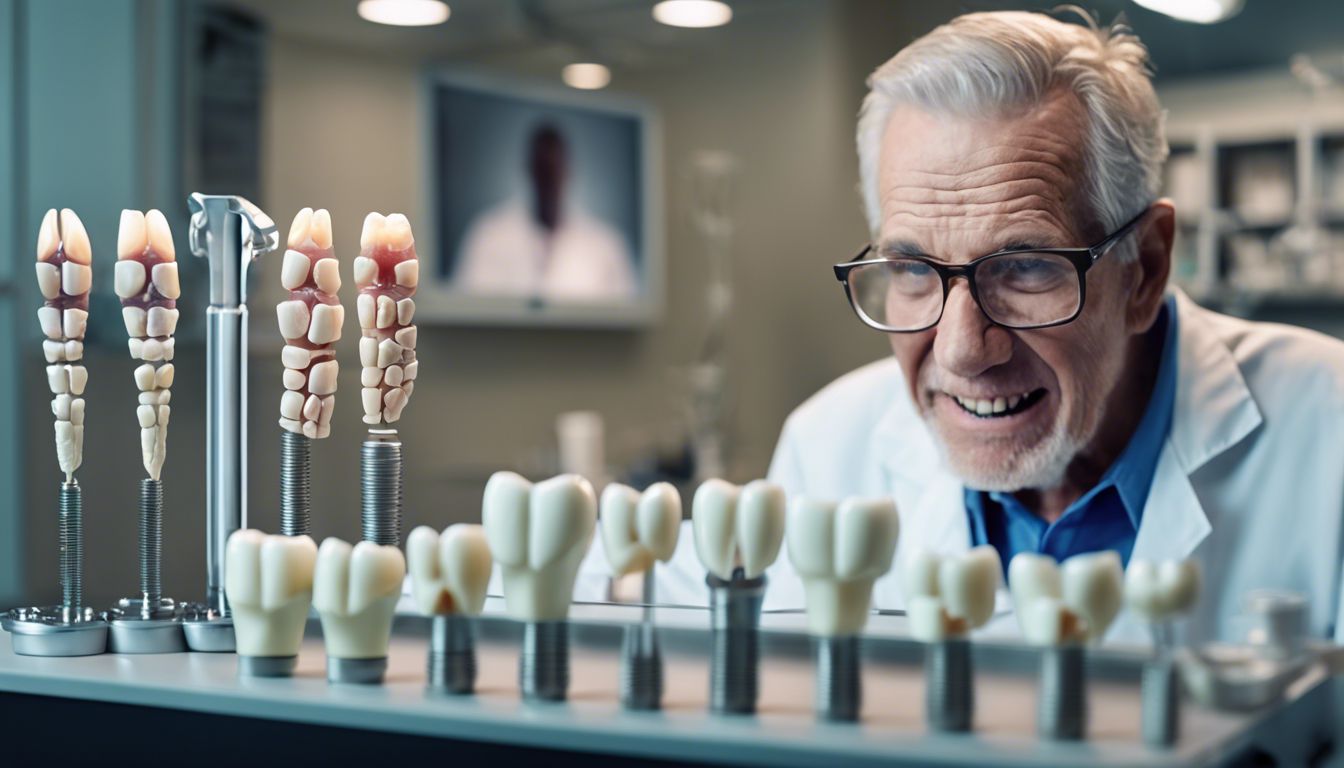Dental implants have revolutionized restorative dentistry, offering long-term solutions for tooth loss; however, for older adults over the age of 55, the procedure can entail specific considerations. Unlike removable dentures, dental implants provide a permanent base for fixed, replacement teeth, resembling and functioning like natural teeth. This article delves into the myriad of implant methodologies, the challenges faced by older patients, and cutting-edge research that may soon reshape the landscape of dental implantology.
The basic dental implant process involves the surgical insertion of a titanium post into the jawbone, which then heals around the implant, securing it firmly in place—a process known as osseointegration. This procedure not only requires a good quality of bone but also a healthy periodontal environment, which can be challenging to maintain as one ages.
For those above 55, issues like reduced bone density and a higher prevalence of periodontal diseases can complicate the implant process. Moreover, systemic health conditions such as diabetes and cardiovascular diseases, which are more common in older adults, can affect the healing process, thereby impacting the success rate of dental implants.
Different regions of the world report varying rates of dental implant procedures, reflective of both differing healthcare priorities and access to advanced dental care. For example, European countries such as Sweden and Switzerland, often pioneers in embracing innovative dental technologies, report higher frequencies of implant procedures compared to many developing countries where dental care may not be as accessible or afforded the same importance.
Recent studies and developments in implant technology show promise in addressing the unique needs of older adults. Research is being conducted on biomaterials that promote faster osseointegration and technologies that enable more precise implant placement, potentially reducing the risk of complications. One such study involves the use of bioactive glasses, which not only support bone integration but also counteract bacteria in the oral environment.
Anecdotal evidence further enriches our understanding of dental implants’ transformative impact. Renowned scientist and public health advocate Dr. Linda Greene shared her personal journey with dental implants at a recent conference, highlighting improved quality of life and restored oral function, underscoring the significance of advancements in dental care tailored for the elderly.
Experts agree that the psychological impact of tooth loss on older adults, often leading to reduced self-esteem and social interaction, magnifies the importance of accessible and efficient dental implant solutions. Dr. Harold Fletcher, a geriatric dentist with decades of experience, emphasizes the role of continued oral health education and preventive care in enhancing the feasibility of dental implants for older adults.
However, there are popular misbeliefs concerning dental implants that need addressing. One common misconception is that older individuals cannot undergo implant surgery due to age-related health issues. While patient selection is critical, age alone is not a contraindicator for dental implants. Adequate assessment and preparation can enable successful implantation in older adults, improving their chewing function, nutritional intake, and overall well-being.
With ongoing research and technological innovation, the future of dental implants looks promising. New methods such as mini-implants and same-day implants are making the procedure less invasive and more adaptable to a variety of dental conditions and patient needs, including those of older adults.
In summary, while geographical and individual health factors play significant roles in the viability of dental implants, continual advances in technology and technique are making dental implants a viable option for more and more older adults across the globe. As the dental community pushes forward with innovative research and patient-centered care, dental implants are likely to become even more reliable and accessible.
You may also like
A Comprehensive Look at Dental Implant Innovations
This article delves into the world of dental implants, exploring various methods and treatments available. It highlights concerns for individuals under the age of 55, discusses experimental studies, and examines the distribution of dental implant procedures across different geographic regions.
The Ever-Evolving Battle Against Hair Loss
Hair loss is a global concern affecting millions of men and women. This article explores the symptoms and causes of hair loss, differentiating between male and female patterns. It delves into available treatments, both traditional and innovative, and examines current research on experimental therapies. Additionally, the article touches on related dermatological issues like acne, atopic dermatitis, psoriasis, and dental care innovations.
Acne: Symptoms, Treatments and Emerging Research for All Ages
Acne is a common skin condition affecting both teenagers and adults, with varying symptoms and treatment options. Recent studies explore new treatments, offering hope for better management. This comprehensive article delves into the intricacies of acne, its incidence worldwide, and innovative approaches being developed.
Atopic Dermatitis: Symptoms, Treatments and Emerging Research
Atopic dermatitis, a chronic skin condition, poses significant challenges for those affected. This article delves into the symptoms, treatment options, and new research prospects for atopic dermatitis and psoriasis, while also exploring related issues like hair loss, acne, and dental care.
Dental Care: Dental Implants and Hygiene Practices
This comprehensive article delves into the world of dental implants and hygiene, covering innovative treatments and emerging technologies. It examines common challenges and debunks myths while providing geographical insights into implant procedures. The piece also offers a summary of modern approaches to hair loss, atopic dermatitis, psoriasis, and acne management.
